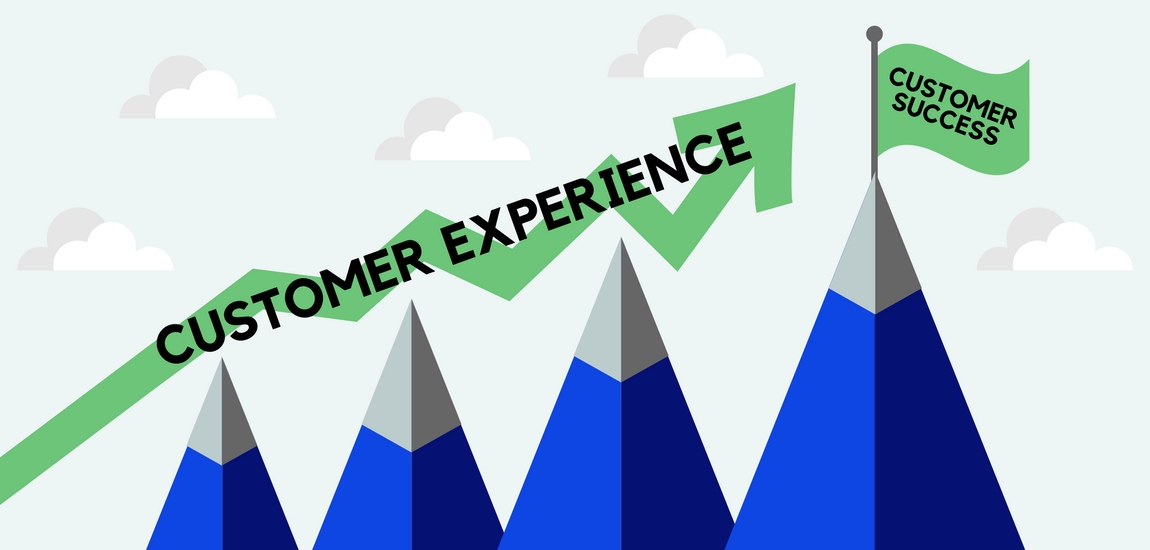Customer Experience and Customer Success
Author
Jeff Zirker
Publish Date
April 5, 2018

How Customer Experience Directly Impacts the Bottom Line, for Customer Success and Beyond
Customer Success has taken the world by storm. Born out of the myriad ‘X as a Service’ subscription businesses, this new business model has drastically changed the way enterprises, finance teams, and customers consume products, services, and – you guessed it – experiences.
The ways companies try to increase Customer Success overlaps largely with Customer Experience (CX), which is the broader term used to describe any interaction a customer has with a company’s brand, products, and/or services. It considers not only a customer’s interactions (from a product, to customer service, to processes like interacting with a website), but also how the customer is feeling throughout the process.
In this blog, I will map the metrics of success in Customer Success (XaaS) offers to the world of Customer Experience. There are striking parallels that any capable CXO, CEO, CFO would notice, with similar motives to ensuring a company’s focus on the Customer Experience is as critical to another (or the same) company’s approach to Customer Success.
Annual Recurring Revenue (ARR) = Net Promoter Score (NPS) Promoters
In the subscription business world, ARR represents revenue you expect to repeat. These are customers who are realizing the benefits of the service, and that you can trust will continue to be satisfied customers well into the future. While revenue can sometimes be a lagging indicator, ARR can be a leading indicator.
While revenue can sometimes be a lagging indicator, ARR can be a leading indicator.
In the CX world, NPS promoters are the prominent indicator of ARR, as those customers are likely realizing the benefits of your CX initiatives and are likely to continue having great experiences going forward. Both are attuned to the present experience with a company’s products, services, software, and customer experience. Leading
Churn = Dissatisfied Customers (NPS detractors)
As the name suggests, churn in the Customer Success domain is the number of customers who will not renew. On the CX side of the equation, churn represents the customers who have found an experience that is better than the current one. Both are bad for business. Revenue churn is a drag on growth, as the cost to re-acquire the same revenue can be higher than retaining customers. CX churn is a drag on your brand (and revenue) – not to mention the hard and soft cost of re-establishing your brand in the eyes of your customer.
Annual Contract Value = New customers from referrals or enhancing the experience
Investments made in new subscription tiers, or enhanced services, expand the “stickiness” of the customers to the company. As more value is received, future value is perceived.
As more value is received, future value is perceived.
A company that constantly evolves their subscription tiers and value is likely responding to their customers’ evolving needs (pricing, services, automation, reporting), and customers are likely to respond in kind – with their wallet. Companies that provide a memorable customer experience are also responding to their customer’s evolving CX needs (multi-channel, personalization, above and beyond, high-touch). Those who are satisfied become brand advocates to the company, leading to the creation and retention of new customers.
Focusing on either Customer Experience or Customer Success can help a business reduce churn, while improving their Annual Contract Value and Annual Returning Revenue (ARR). But the results – increased revenue, brand recognition, market share, etc. – will be maximized exponentially when Customer Experience and Customer Success are viewed and implemented together.
The results will be maximized exponentially when Customer Experience and Customer Success are implemented together.
Finance, Marketing, and Customer Support teams need to be prepared for these new business models. Financial reporting tends to focus on current revenue over recurring revenue, and customer-facing organizations tend to look at satisfaction of transactions rather than focus on adoption and satisfaction of service tiers. Investments in new reporting dashboards and tools will ensure a company’s attention is in the right place.
If you’re responsible for recurring revenue streams, seek out your peer who is responsible for recurring customer experience – you’re kindred spirits!
This post is from our CXO Blog series, written by Jeff Zirker, our Chief Experience Officer (CXO). See the rest of his collection here.
About the Author:

Jeff Zirker started with TSG in 2015 after more than 22 years with a leading U.S. technology company. His passion for people has led to the implementation of new processes and programs across the company designed to enhance customer experience. No stranger to adventure, Jeff once spent two weeks on an uninhabited Hawaiian island.
Categories
Business Insights, CXO Series
